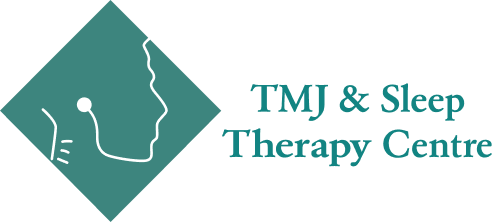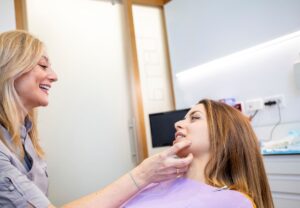If you live with chronic jaw tension, recurring headaches, or persistent neck stiffness, your body may be out of balance in ways traditional treatments haven’t addressed. That’s where cranial osteopathy comes in—a gentle, non-invasive therapy that helps release tension and restore balance throughout the head, face, and neck.
At TMJ & Sleep Therapy Centre Indiana, we incorporate cranial osteopathy as part of our whole-body approach to treating TMJ disorders, facial pain, airway dysfunction, and more. By using subtle, hands-on techniques, we can help patients of all ages feel better without medication or surgery.
What Is Cranial Osteopathy?
Cranial osteopathy is a form of manual therapy that focuses on the bones, membranes, and fluids of the head and spine. It’s based on the principle that the body has its own natural rhythms and that gentle manipulation can improve the flow of fluids, release tension, and promote self-healing.
It’s especially helpful for patients with:
- TMJ dysfunction
- Headaches or migraines
- Facial asymmetry or tension
- Neck and shoulder pain
- Jaw clenching or grinding
- Postural imbalance
- Infant or pediatric developmental concerns
Rather than forceful adjustments, cranial osteopathy uses subtle movements to help the body unwind from long-held restrictions.
How Does It Work?
The bones of the skull are not rigidly fused—they have small, natural movements. Tension from birth trauma, injury, chronic muscle strain, or poor posture can restrict these movements and disrupt balance throughout the craniosacral system (which includes the skull, spine, and sacrum).
Cranial osteopaths use their hands to:
- Feel for areas of restriction or imbalance
- Gently release tension in soft tissues and joints
- Support better circulation and nervous system function
- Encourage structural and energetic alignment
The result is often a sense of lightness, reduced pain, and improved function across multiple systems of the body.
Why Cranial Osteopathy for TMJ and Head Pain?
TMJ disorders don’t just affect the jaw—they can disrupt surrounding muscles, nerves, and even spinal alignment. This creates a ripple effect that contributes to:
- Jaw clicking or locking
- Neck stiffness
- Headaches or facial pressure
- Tinnitus (ringing in the ears)
- Poor posture and breathing issues
Cranial osteopathy helps by:
✅ Reducing pressure on the TMJs and associated muscles
✅ Improving fluid flow and drainage around the head
✅ Relaxing the nervous system
✅ Supporting balanced jaw movement
✅ Enhancing results from orthotics or other TMJ therapies
It can also complement other treatments like laser therapy, regenerative injections, and myofunctional therapy.
Who Can Benefit from Cranial Osteopathy?
Cranial osteopathy is safe and effective for people of all ages.
For adults:
- TMJ dysfunction
- Whiplash recovery
- Chronic headaches
- Sleep disorders
- Postural fatigue
For children and teens:
- Facial development support
- Orthodontic preparation
- Tongue-tie recovery
- Torticollis or flat head syndrome
- Anxiety or sensory processing issues
For infants:
- Birth-related trauma
- Nursing and latch difficulties
- Digestive discomfort
- Sleep disturbances
Because cranial osteopathy is so gentle, it’s especially valuable for those who are sensitive to touch or prefer non-forceful therapies.
What to Expect During Treatment
- Initial Evaluation
- We’ll review your symptoms, health history, posture, and cranial patterns to determine how cranial osteopathy can help.
- Gentle Hands-On Session
- You’ll lie comfortably while the practitioner uses light touch on the head, neck, back, and jaw. Most people describe the session as relaxing or meditative.
- Subtle Adjustments
- Techniques are tailored to your body’s rhythms and may involve subtle rocking, compression, or holding patterns.
- Post-Session Effects
- Many patients feel immediate relief or a sense of deep calm. Follow-up sessions may be recommended to support lasting results.
FAQs About Cranial Osteopathy
Is cranial osteopathy the same as craniosacral therapy?
They’re similar, but cranial osteopathy is practiced by trained physicians (often DOs) and integrates a broader understanding of anatomy, structure, and physiology. Both approaches share the goal of supporting balance and self-healing.
How long does a session last?
Typically 30–45 minutes, depending on your treatment needs.
Will I feel anything during the session?
Most patients feel a sense of gentle movement, warmth, or relaxation. It’s a subtle but deeply effective therapy.
Can it help with TMJ pain?
Yes. Many TMJ patients find that cranial osteopathy relieves tension, improves joint movement, and reduces associated symptoms like headaches and facial tightness.
Heal from the Inside Out
Cranial osteopathy offers a gentle but powerful way to address the root of chronic pain and dysfunction—especially when it involves the jaw, head, or spine. Whether you’ve tried other treatments without success or are looking for a natural, whole-body approach, our team can help guide you toward real, lasting relief.
At TMJ & Sleep Therapy Centre Indiana, we believe in treating the whole person, not just isolated symptoms. Cranial osteopathy is one of many tools we use to help you feel better, breathe better, and live better.
👉 Request an Appointment today to schedule a cranial osteopathy consultation.





